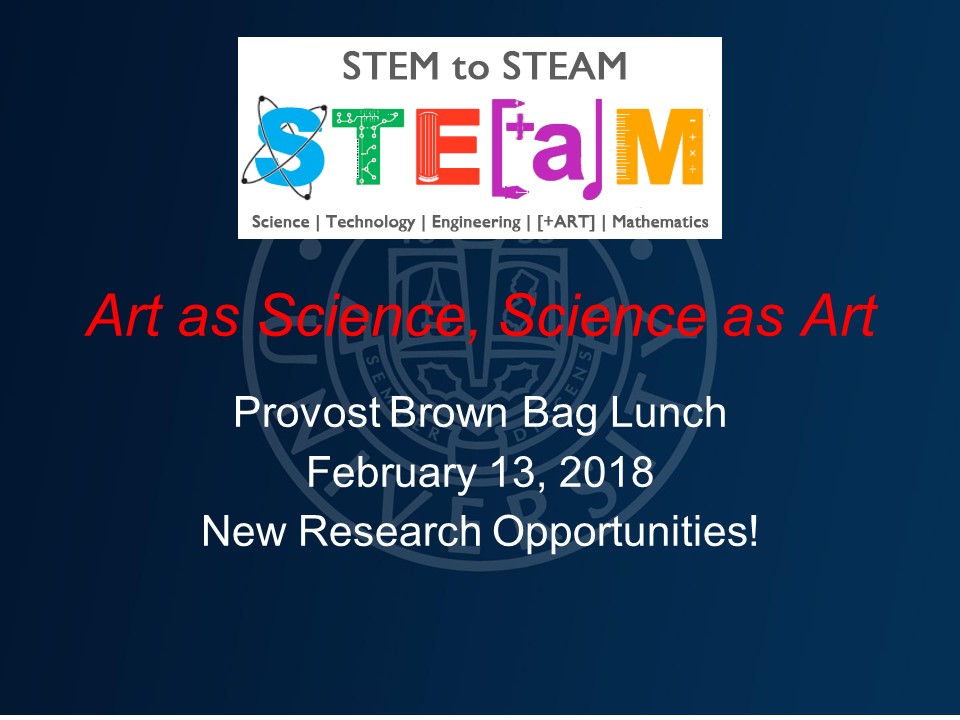“STEAMED” SpF AWARD
The 2018 “STEAMED” SpF is a campus-wide initiative intended to foster interdisciplinary collaboration and innovation between Science, Technology, Education, the Arts, Mathematics, Entrepreneurship and Design. Modeled on Kean University’s Students Partnering with Faculty (SpF) program, “STEAMED” applicant teams must include two faculty from different disciplines, and preferably from different colleges, each mentoring one or two students from those disciplines.
FUNDED PROJECTS 2018-2019
Intelligent Wayfinding
In today’s world, many environments do not provide rich information about the surroundings, contents, history, or utility of the environment to users, either while in the environment or nearby. The detail available through design has not been integrated with the delivery available through technology. With the research proposed here, an integration between design and technology will be undertaken, to determine if an intelligent wayfinding system can be successfully designed in an appropriate environmental context. This wayfinding system will support the identification of design and technology factors guiding success, which has not been done before. Joint discussions between design and computer science students will focus on current wayfinding systems, and proposals for advanced systems. A specific case study will be undertaken using the Liberty Hall Orchard as an example, building a prototype system to provide information about the Orchard in an aesthetic, accessible manner which can be scaled up to support other environments, including assisted mobility and non-mobile user environments.
Submitted by: Edward Johnston, Robert Busch School of Design, Michael Graves College (and) Patricia Morreale, Department of Computer Science, College of Natural, Applied and Health Sciences
Fully Immersive Public Space
This project will endeavor to recreate significant Public Spaces from various locations in the world through use of the UNITY software in the simulated CAVE environment. Using actual 360 camera views as well as actual video feeds, simulated environments of such important open public spaces, such as the Piazza Navona in Rome, the Temple at Luxor in Egypt and Red Square in Moscow, would be reconstituted. An inventory of these “virtual experiential events” organized by typology will be developed and integrated into the First Year Architecture curricular experience, which is dedicated to “Urbanism and Architecture”. This could allow a fuller more immersive experience for understanding and appreciating how, through its attributes, this space gives civic quality to urban life. It is the goal of the summer research to develop a variety of experiential environments that can be utilized in the fall 2019 semester to support architectural education. Additionally, the Unity software can enable the design of space in real time, selecting options and experiencing them as “reality”. The CAVE also has potential application in the explanation to stakeholders of a newly created design, thus allowing them to be “in” a design before it is constructed.
Submitted by: David Joiner, New Jersey Center for Science, Technology and Mathematics (and) Craig Konyk, School of Public Architecture, Michael Graves College
Click on the images above to view the PowerPoint presentations from the February 13, 2018 Provost's Brown Bag Lunch Discussion about STEAM projects


